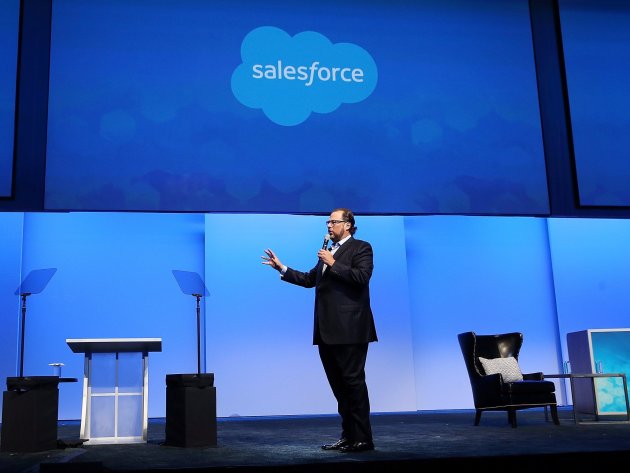In one paragraph, Salesforce explains why it’s so hard to sell to big companies. Business Insider By Eugene Kim. 9 Mar 2016
 Justin Sullivan/Getty Images
Justin Sullivan/Getty Images
Salesforce CEO Marc Benioff
Some of the biggest software makers like Dropbox often say they don’t need a huge enterprise sales team to sell their products to other companies.
Instead, they claim to be selling by word of mouth, referring to their products’ virality. Once there are enough employees using the software on their own, the companies will be forced to buy up, the thinking goes.
But according to Salesforce, the fastest-growing cloud business software maker ever, enterprise sales is still very relevant and not something to be taken lightly.
In fact, it’s so important that Salesforce mentions the challenge of enterprise sales as one of its “Risk factors” in its annual 10-K filing yesterday:
As more of our sales efforts are targeted at larger enterprise customers, our sales cycle may become more time-consuming and expensive, we may encounter pricing pressure and implementation and customization challenges, and we may have to delay revenue recognition for some complex transactions, all of which could harm our business and operating results.
In plain English, that means:
1) Longer, costlier sales cycles: Selling to big companies could take months, or even years, depending on the customer. The upside is once you get them, they usually stay as a customer for a long time.
2) Pricing pressure as customers ask for discounts: Big companies tend to sign big contracts, and since they’re buying so much, they ask for a discount.
3) Implementation/customization as customers ask for special tweaks: Because they’re spending so much, some enterprises ask for a bespoke version that fits into their systems and workflow. A lot of this work can be done by consultants and other partners, but sometimes it requires the software maker to make changes as well.
4) Delaying revenue recognition as transactions take longer to close and finish: Cloud software in general recognizes revenue over time, but more bigger deals could have technical requirements that further complicate the revenue recognition process.
Given that Salesforce has historically spent nearly half of its revenue on sales and marketing every year, this isn’t anything new. It just reaffirms the heavy cost of enterprise sales, which only gets more expensive as you go towards larger customers.
“In this market segment, the customer’s decision to use our services may be an enterprise-wide decision and, if so, these types of sales would require us to provide greater levels of education regarding the use and benefits of our services, as well as education regarding privacy and data protection laws and regulations to prospective customers with international operations,” Salesforce added.
Which brings us back to Dropbox, who recently launched Dropbox Enterprise, a service targeting big companies. Its CEO Drew Houston said that reaching scale in the enterprise won’t require much spending in sales, because its massive free user base allows it to take a “bottoms-up” approach — where it simply has to convert the employees in companies to paying business users, without the need to spend much time convincing the upper-level decision-makers.
“The challenge is because they don’t have that kind of bottoms-up adoption, it’s a lot harder to get customers … they got to hire all these sales people and spend a ton of money,” Houston said, referring to his main competitor Box, who spends the majority of its revenue on sales and marketing. “I think our approach is a lot better.”
That’s a debatable idea and something that will be a hot topic as Dropbox marches towards its much anticipated IPO. For what it’s worth, Dropbox celebrated passing 500 million registered users on Monday. If Dropbox can prove its sales model works, it would be another huge milestone in its 9-year history.
Source: https://sg.finance.yahoo.com/news/one-paragraph-salesforce-explains-why-231732422.html
Comments